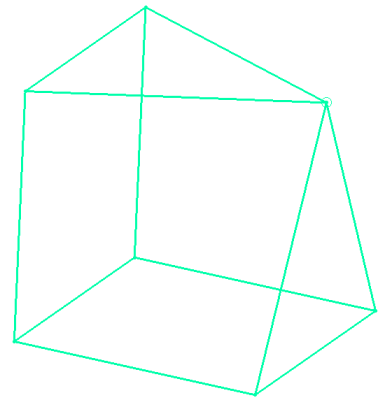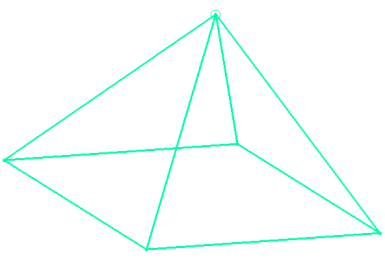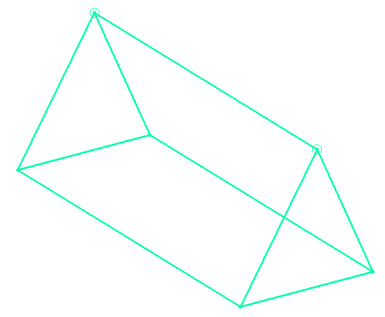Description
When exporting a structured block to an unstructured CAE format, the presence of poles (point and line singularities) within the structured blocking topology results in collapsed (or degenerate) hexahedral cells, which are unsupported cell types. Fidelity Pointwise, therefore, converts hexes with collapsed faces into either pyramids or prisms, depending on whether the collapsed face is a point singularity or a line singularity.
Tip: Before exporting a structured block to an unstructured format,
it is a good idea to examine any
pole connectors in your mesh to make sure
that the topology will be supported. Pole connectors can be easily identified in two ways:
in the List panel
look for connectors that have the Pole type and in the
Display window look for
connectors rendered with the pole icon
().
Hexahedral cells with a collapsed edge result in an unsupported wedge cell type (shown below). If this topology is detected during export of the CAE file, Fidelity Pointwise will stop export with an error message referencing the unsupported block topology.


